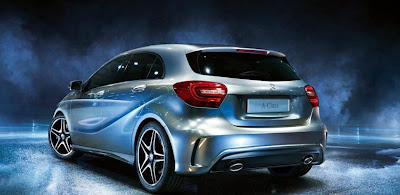4WD:
Whats is it??
Its a mechanism in which all the 4 wheels of an vehicle simultaneously receive torque from the engine.
The best system will send exactly the right amount of torque to each wheel, which is the maximum torque that won't cause that tire to slip. This provides a stable control over the vehicle and provides better traction over the toughest of terrains. Normally the vehicles have 2WD in which the engine power is transferred to any of the front or rear set of wheels. This feature is mostly available in SUV's or Other high end cars as it is not much necessary feature to have for normal city driving.
How it works??
4wd works with the help of differential present on the front and the rear drive shaft of the vehicle. A car has two differentials, one located between the two front wheels and one between the two rear wheels. They send the torque from the driveshaft or transmission to the drive wheels. They also allow the left and right wheels to spin at different speeds when you go around a turn.The differential
 |
| A differential |
The differential is a mechanical device that reacts to resistance. The inside tire, by following a smaller circle in a turn, puts up resistance. The differential reacts to this resistance and allows it to rotate less. At the same time the outside tire is forced to rotate faster by the same rate the inside wheel rotates less.
When you go around a turn, the inside wheels follow a different path than the outside wheels, and the front wheels follow a different path than the rear wheels, so each of the wheels is spinning at a different speed. The differentials enable the speed difference between the inside and outside wheels. These differentials have a unique gearset: As soon as it senses a decrease in torque to one wheel (which occurs when a tire is about to slip), the gearset transfers torque to the other wheel.
The vehicle has a switch to turn the 4WD ON or OFF.
When the 4WD mode is turned on the engine starts supplying torque to the all the 4 wheels with the help of transfer case present in the 4WD assembly. The sole purpose of this transfer case is to create connection between the rear differential and the engine. When the 4wd mode is turned off the connection in the transfer case is open and when the mode is changed the connection is closed and the vehicle is in 4wd Mode.
Watch the video to understand the functioning:














